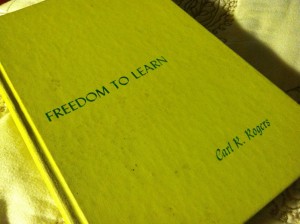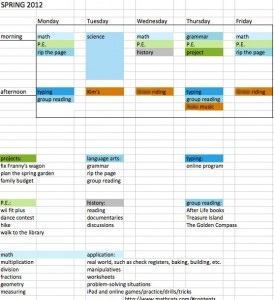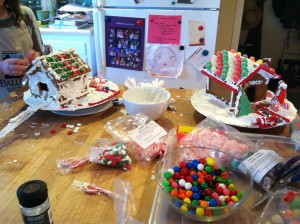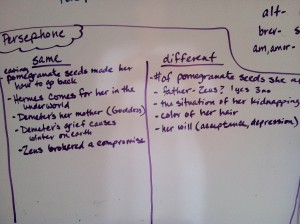Ok, folks, FINALLY the wrap up to our first year of homeschooling. The learning curve wasn’t just steep, it was crazy wavy with depressing lows and heart-bursting highs. AND I’m so glad we began this journey and continue to tempt fate with our particular path.
So go ahead, read, and get a bird’s eye view into one of a gazillion possibilities of how to go about learning…
Wiggling Into Self-Directed Learning
After being inspired from reading “Freedom to Learn” by Carl Rogers, I thought I’d wait until I had the plan figured out before presenting to Rue and Gigi the idea of a new structure for our days. Then I realized the whole idea of self-direction is to take ownership and responsibility for your own learning, so it would be best to bring them in on the planning. From the beginning they each were curious, but weren’t sure how this was going to move into action. At first, either did I.
Over the course of a week the container we wished to create began to take form.
I would be their facilitator. I would assist in any way they needed and especially as a provider of resources. First thing in the morning each girl would sit down and make a list of what she would be working on for the day. We would go over the list together to see if anything was needed from me such as instruction, a worksheet, a book, or other materials, or if we would need to go offsite for a field trip or to gather more information. Once we had done that I would have my “to do” list and each girl would have her own self-directed curriculum to work on.
A few days in I decided I would feel better with a bit more oversight on their progress. We decided we would meet on Fridays, one-on-one, to go over the week’s work. Each of us ended up looking forward to this time for different reasons.
Gigi would show up with a pile of paperwork and books and proceed to go through them with confidence and pride. She talked about what worked for her and didn’t. The Friday evaluation was a chance to show the quantity, quality and completion of her work, an important goal for a producer like her.
At the first meeting with Rue she brought a few papers and her planning book. She was eager to meet and then started out kind of apologetic, “I really didn’t do much that I can show.” “That’s ok.” I encouraged, “Tell me about what you’ve been working on.” She opened up her planning book and went through the days, describing in great detail about what she had discovered, figured out, and thought about, none of which could easily be tested or graded, but was incredibly rich in depth and insight. For Rue, this was uninterrupted time with Mom going over her week, her ideas, and her stories, offering a great sense of accomplishment, worth, and connection to a relator like her.
And for me, well, it was this Mom’s dream scene…my children sharing happily, even excitedly at times, about their discoveries in learning and being able to let myself listen and connect with their joy without an agenda or timeline.
At the end of the first week I called a process evaluation meeting. “So, what do you think so far?” These are the notes I wrote down on their responses:
Positives- get to pick what you are working on for yourself, lots of possible projects, able to focus easily, more fun, look forward to it
Negatives- G felt R was getting more of my attention, R frustrated by not being able to finish her plan on Thursday
Obviously, the positives far outweighed the negatives.
Each day both Rue and Gigi willingly (almost eagerly) wrote up their plans and set to working on them. Sometimes they would stop and chat with each other or get up, do something else, and then go back to their plan. A couple of times I saw one of them engrossed in a “school-like” learning activity in the evening. Something they would have fought previously. They also started working on more projects together.
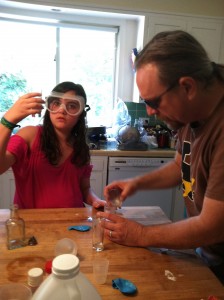
Now we are 6 weeks into our second year. We’ve approached learning in the same way with a slight modification. I certainly don’t want to mess with a good thing, but the girls continue to talk about going to our local high school eventually. With this in mind I created a weekly calendar that has the requirement of studying certain subjects on certain days. In my teacher mind I’m hoping to ensure they stay well-rounded (you guessed it, Rue was avoiding math like the plague). The particular subject matter is still at their discretion.
I feel we have hit our stride, at least for now. One never knows what’s around the next corner. I keep wishing for world travelling in our future!
Thanks for following our first year! Don’t think this is over. I’ll be sharing projects, experiments, field trips, and who knows what else in future posts.

